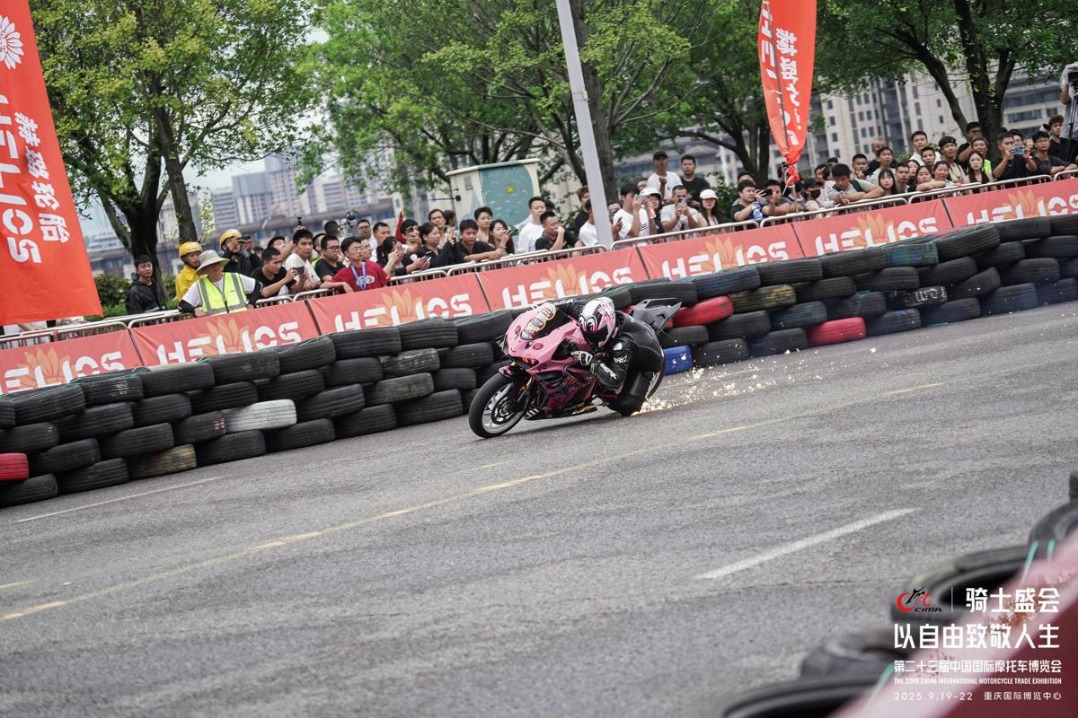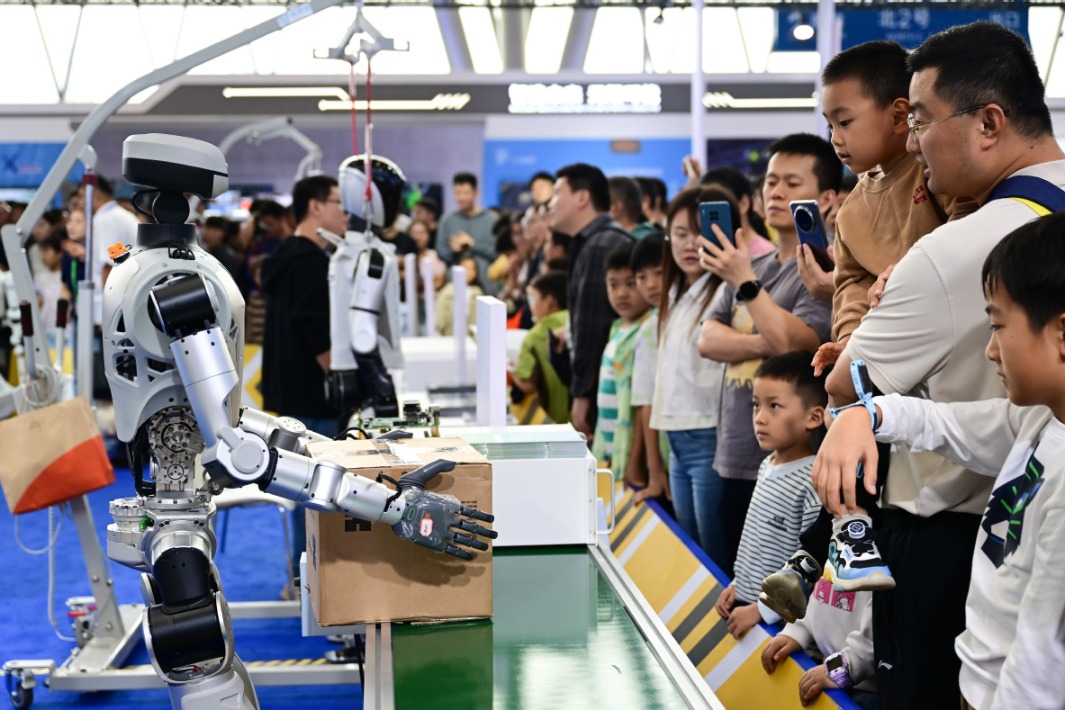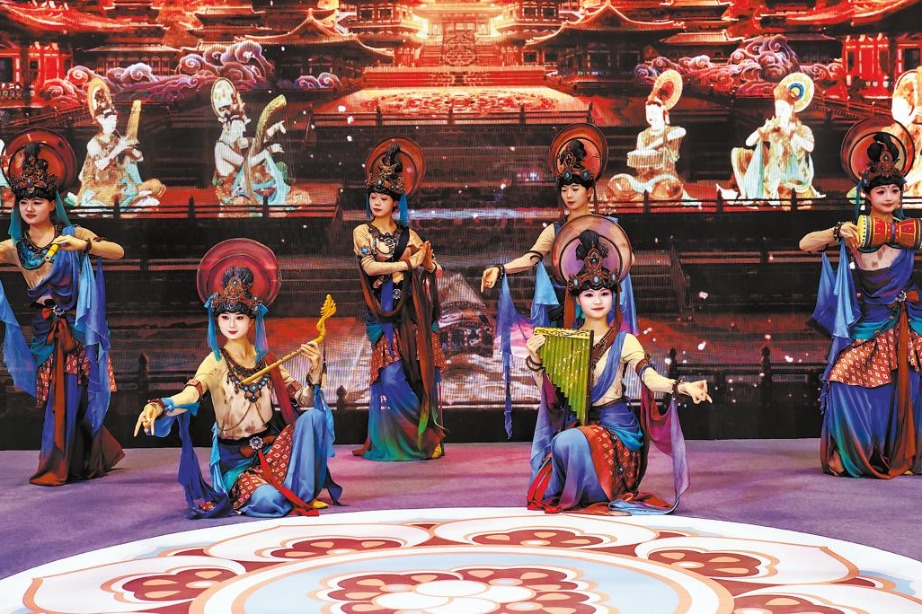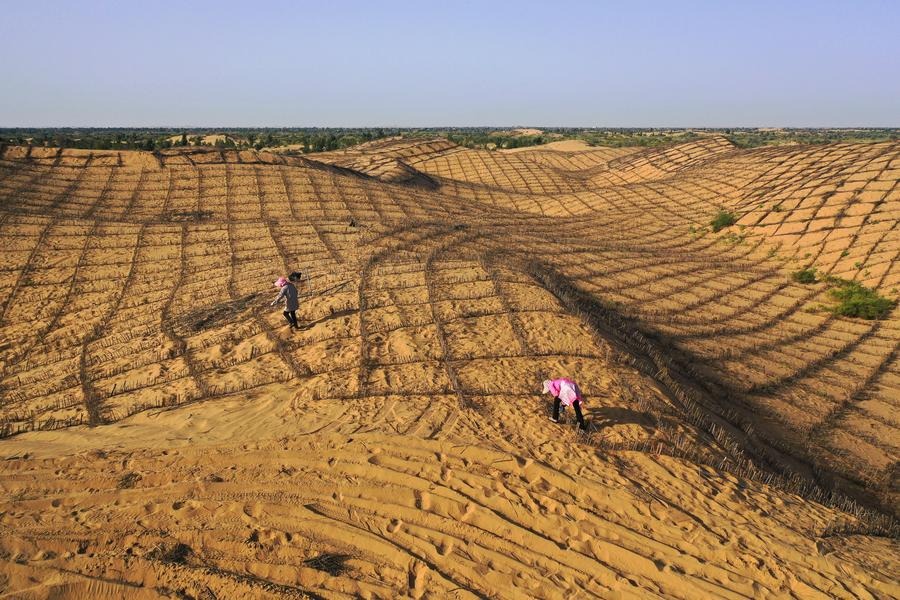Strangers in their own land
Their ancestors helped build the country, and they continue to do so, yet it may be that Asian Americans have never felt so ignored, unwanted and often despised. Now many are speaking out, with 2,388 signing a letter to New York's mayor suggesting that education is an answer to the problem.

One morning in February last year Alice Tsui, a music teacher at an elementary school in Brooklyn, New York, was climbing the stairs toward her school's sunlight-filled auditorium, where she was about to unveil what she believed would be a beautiful day for her mostly black and brown students, with music.
"That was when a fifth-grader stopped me and said, 'Miss Alice, someone said you had coronavirus," recalls Tsui, who was born to Chinese migrant parents in New York in the early 1990s.
"I later found out that it was another one of my fifth-grade students whom I had taught for many years."
On March 21, five days after the shooting in Atlanta, Georgia, in which Robert Aaron Long, 21, killed eight people, including six Asian women, within half an hour, Tsui took to the platform at a rally against Asian hate, her voice trembling with rage.
"I am so mad at the toxicity of systematic racism that we breathe in, and specifically white supremacy, for dividing my black children and I, an Asian American teacher in this world," she told the crowd as she was overwhelmed by another surge of emotion.
"My call to action to you, everyone here, is to find those emails, the contact information of principals, teachers, and the educational institutions that are supposed to serve us," Tsui said. The goal is to "acknowledge and teach Asian American history, lives and arts including and beyond the Lunar New Year".
Her impassioned words fell on fertile ears. On April 26 five parents, all Chinese Americans, sent a letter to New York Mayor Bill de Blasio and the city's Schools Chancellor, Meisha Porter.
"The recent surge in anti-Asian hate crimes and violence has highlighted the woefully inadequate education pertaining to Asian American history that our children receive. As parents of Asian American students in NYC public schools, we urge you to ... establish and promote a curriculum that is inclusive of Asian American history and culture," the letter began, ending with 2,388 signatures from concerned parents, students, educators, and those who identify themselves as a "graduate" or simply "a resident".
Citing Tsui as an inspiration, Xia Li, who has a 13-year-old daughter and wrote the first draft of the letter, said she was jolted into action by the sheer amount of violence, some committed against those close to her.
"A colleague of mine, whose parents were originally from China and the Philippines, believes that she has lost her father to Asian hate, after having the pandemic claim the lives of several other family members," said Li, an education professor at Brooklyn College who describes herself, before the pandemic, as "the opposite of an advocate".
"The old man was found at a bus stop, apparently having been assaulted and unable to speak. He was taken to hospital by passersby, stayed there for nearly a month in a coma and died on New Year's Eve," she said.
"It (Asian hate) won't be on the news until more people die," one of Tsui's 4th-graders told her. "What does this say about what my students know about our society and have already internalized?"
"The best antidote", Li and her fellow parents believe, lies with education, one that "must start in the earliest grades".
"Invisibility-the word popped up in my mind as I walked through my daughter's school corridor with pictures of famous people lining both sides of the wall, not seeing a single Asian face," Li said. "The children of Asian descent have grown so used to it-used to seeing neither themselves nor their ancestors-that the issue barely registers for them."
Lulu Song, also from Brooklyn College, was at the same Zoom meeting with Li when their Chinese-Filipino colleague reduced both to tears with her family tragedy. Joining Li to push for the education proposal, Song said the idea has been at the back of her mind since her daughter, now 10, was 4. (Song also has a 6-year-old son.)
"One day she came back from kindergarten crying and saying that she no longer wanted my mother, her grandmother, to pick her up. "'Chinese are short! Chinese houses are flat!'-she shouted at us," Song recalled. "I was angry but didn't quite know what to say."
Graduating from one of China's top universities before moving to the US to pursue her studies in the late 2000s, Song herself had no idea then that it was the 12,000 or more Chinese laborers who built the western section of the Transcontinental Railroad in the 1880s. (The other half was built mostly by Irish workers.)Linking the country from coast to coast, the railroad that built America, as it is known today, would not have been possible without these men who were poorly fed, who lived in flat houses-makeshift tents-for seven winters while the track was being laid, and who helped shape the country's future through their sheer endeavor.
"The absence of that history in our education means that my daughter hasn't been allowed to take pride in the accomplishment of her ancestors in this country," Song lamented.
Even worse, on occasions when the event does receive a fleeting mention in its "bare minimum", to quote Aiden Tan, 14, a New York high school student, the effect is often toward reinforcing the existing stereotype, rather than challenging it in a way that promotes understanding and appreciation among students of different ethnic roots.
"All we learned was that they (the railroad workers) were cheap laborers who had had a tough life in China," Tan said. There's no mention of the lives lost as the men blasted through the granite mountain face at Sierra Nevada, or the amazing speed at which they laid the tracks.
Similarly, as anti-Asian hate raged alongside the pandemic last year, one public school in the New York borough of Queens taught its second-graders about the 19th and early 20th immigration history of the Chinese, Italian and Irish in the city. Students learned, in bullet points, that the Chinese "worked in the city's laundries and sweatshops" and routinely "sent money back home to support their family in China", according to a mother who is Chinese American and whose daughter attended the school.
"A Jewish proverb goes: a half truth is a whole lie," said the mother, who requested anonymity. "In this case, the students, both of Asian and non-Asian descent, have been failed by the teacher's-and to be more exact our education system's-failure to contextualize what they teach.
"Under the casual, almost indifferent light, they appear as sojourners who were here to take, and who never engaged seriously with the country they had crossed oceans to reach, sometimes at the risk of their lives," she said. "This is completely untrue: Heaven knows how they had struggled to sink roots into a land whose soil was rendered arid by rampant racism."
In April the same elementary school, in teaching reading comprehension to students, chose the 2006 book The Earth Dragon Awakes-The San Francisco Earthquake of 1906, by the Chinese American author Laurence Yep. Focusing on two families-one white (the Travis family), one Chinese (the Chin family)-affected by an earthquake that destroyed more than 80 percent of San Francisco, the historical fiction is known more for its descriptive language and interesting seismic facts than for shedding light on the reality of the era, and what it meant for Chinese living on the American West Coast at the time.
Near the end of the book the Chin family, whose father was a house boy at the Travis household, had no choice but to leave after the earthquake because "the people of San Francisco don't want to let us go back to our old neighborhood", said Ah Sing, the Chin family son, in resignation.
"The students walk away with no more than a vague sense of inequality," the mother said. "In real life the Chins probably wouldn't have left their homes until it was totally burned down, not during an earthquake but as a result of hate crimes."
During the teaching of the book, which lasted for about two weeks, no complementary materials were provided. There was no talk about the notorious San Francisco riot of 1877, three days of racial violence that swept Chinatown, resulting in many deaths and the destruction of property worth more than $100,000. Nor was there any mention of the fact that the Chinese immigrants, with their rich agricultural expertise, helped make the San Francisco Bay Delta one of America's prime areas of farmland, often by reclaiming swampland.
The direct result of such an approach, said Tsui, is that "our teachers and students are not empowered to engage in meaningful discussion about racism, let alone speak against it." Instead, it leads to ignorance, an ossified perception of Asians as being alien, and "any subtle form of racism" all too familiar to her and others.
"At elementary school the kids said that the delicious food my parents had packed for me-from fried rice and noodles to string bean and shrimp-was smelly," she says. "For a very long time I insisted that my parents pack me only ham sandwiches."
Similar experiences have befallen Katherine Lai, 15, who recalls attending "a predominantly Caucasian school" and being told by her classmates that her food was disgusting.
"Kids would run around screaming, 'Chinese, Japanese, I like cheese,' while pulling back their eyes on the playground. What they did is still ingrained in me, even after 10 years."
In a document accompanying the open letter to the mayor and schools chancellor, both Lai and Tan argued forcefully for the need for Asian American history education, joined by a couple of dozen others between the age of 12 and 15.
"People telling us to 'go back to your country' as if we are less American than them," wrote 14-year-old Mikayla Lin, whose parents migrated from China to the US before she was born.
"Shock and confusion" have hit the boys and girls hard since the start of the pandemic, said Ting Yu, mother of Aiden Tan and his 12-year-old sister Samantha Tan.
"On one hand, they, who consider themselves Americans, have been repeatedly told that they don't belong; on the other hand, their parents, who have been wishing them to learn about Chinese culture and tradition, suddenly warn them against identifying themselves as ethnic Chinese in public, out of concern for their safety," said Yu, a physical therapist who came to the US from China at the age of 14. Yu, one of the five parents behind the proposal, was responsible for collecting students' views, and she did so mostly among those who are on the same debating team as her own children.
"I don't do debate myself but I'm passionate about it because it raises social and political awareness and cultivates leadership, areas in which we must train our children if we are serious about heralding changes in education and elsewhere," Yu says.
Among those she has in mind are Grace Meng, a member of the US House of Representatives, and John Liu, a New York state senator. Both are of Chinese descent.
On October 5 last year Meng, first vice chairman of the US Congressional Asian Pacific American Caucus, introduced in the House of Representatives the Teaching Asian Pacific American History Act. "The announcement... comes on this day, 42 years ago, when president Jimmy Carter signed a joint resolution designating the annual celebration of Asian Pacific American Heritage Week," Meng's office said. Sadly, Heritage Week, which was later extended to a month under President George W. H. Bush in 1990 and is celebrated every May, has been largely "geared toward festivals and fairs", Yu says.
Meng was able to celebrate a victory last week when the federal Hate Crimes Act, of which she was a co-sponsor, became law. It aims to make the reporting of hate crimes more accessible at local and state levels by boosting public outreach and ensuring reporting resources are available online in many languages.
On April 26, the same day the parents submitted their letter, Liu's office announced that he had introduced legislation "requiring New York state public elementary and high schools to provide instruction in the history and civic impact of Asian Americans".
That "civic impact" was made when Wong Kim Ark, who was born in San Francisco in 1873, challenged the US government in court for its refusal to recognize his citizenship. In a landmark decision, the US Supreme Court upheld Ark's request and established the rule of "birthright citizenship" for those who came after him.
Yiatin Chu, who migrated to the US with her Chinese parents at the age of 9, learned about it last year.
"Coming here in the 70s and 80s, watching Sesame Street and learning how to speak English, I had a very different view of what diversity meant as I do now. Melting pot as a concept was definitely more about assimilation (than understanding and celebrating one's own cultural tradition and history)," said the mother-of-two.
In the US, Chu's parents, an engineer and a schoolteacher in Taiwan, were reduced to doing "menial tasks". Yet the mother, while she was not learning English or "stringing beads into necklaces for 5 cents a strand", still found time to teach Chu Chinese, as well as bits and pieces of ancient Chinese history. Later in college, Chu took an elective on 20th-century China which, she says, probably not surprisingly, cast the country mostly in negative light.
"All along the way, I never got to learn Chinese American history," she says.
Then came her belated first lesson in 2019, when a fellow Brooklyn school board member of Chu named Jackie Cody used a racial slur to refer to Asian Americans during an online parent-leader forum.
"To be blunt, certain whites and certain yellow folks ... continue to focus on a very narrow view," Cody wrote at the time. "What they are advocating for is damaging to white and yellow children as well."
"For the first time I researched into what being called yellow means in American history," said Chu, referring to the term yellow peril, used in the 19th and early 20th centuries to vilify Asian American immigrant laborers. Horrendous racial violence, including burning and lynching, were carried out to crush the "sinister yellow peril".
The research eventually led Chu to the Museum of Chinese in America in Manhattan, which grew out of two men's effort to salvage the history of their forefathers, partly by roaming the streets in Manhattan Chinatown and looking into whatever had been thrown out onto the streets after the passing of an elderly resident.
There, Chu discovered not "skeletal facts" but a history fleshed out in numerous relics-often odds and ends that were no more than flotsam on the deserted shore of memory but that spoke volumes about the remarkable yet unsung journeys of their owners.
In addition to humiliation, what Chu discovered was power and pride amid poignancy, heroism and humanity. She learned that in 1884 a Chinese American couple took the San Francisco school board to court for banning their daughter from attending an all-white school, and that a group of young Asian American artists-activists in Manhattan Chinatown published an art book in the 70s celebrating Asian American creativity and proudly titled it Yellow Pearl.
"People who battled social injustice-up to that point they had been absent from my textbooks and my consciousness", says Chu, who had previously seen Chinese heroes only on the silver screen, as high-kicking Kong-Fu masters.
Things have changed little over the past 30 years. "I've grown up with absolutely no Asian American role models, and as of now I still do not know any," says Lai, the high schooler, who longs for an Asian American equivalent of Martin Luther King Jr. or Malcolm X to "look up to". "Instead of trying to stop the appropriation of and hate against Asian culture, let's seek to educate children and present great Asian role models, whether it be through signs or posters or just reading a quote from a great Asian American leader."
In fact there are many people worth looking up to, said Joseph Chou (Zhou), a recently retired assistant principal at Francis Lewis High School in New York. Chou's maternal grandfather, Zhou Peiyuan, studied at the University of Chicago and the California Institute of Technology before becoming a student of Albert Einstein at Princeton. While serving as deputy director of the Chinese Academy of Sciences he played a crucial role in facilitating US-China educational exchanges in the late 1970s.
"Chen-Ning Yang, Tsung-Dao Lee and Chao Chung Ting-none of them are taught at our schools," said Chou, referring to the three Chinese American Nobel Prize laureates in physics (Yang and Lee in 1957 and Ting in 1976). Then there is Chien-Shiung Wu, Chinese American nuclear physicist whose experiment proved the theory of Yang and Lee that resulted in them receiving the Nobel Prize. In February this year, 24 years after Wu died, the US Postal Service honored "the queen of nuclear research" with a commemorative stamp.
"But it will probably take more time before our schoolchildren learn about her during their Women's History Months," said the father-of-three, who was also behind the open letter.
"The entrenched views of Asian Americans can only be fully dismantled when our educators recognize their contributions in not one but all areas of American society."
As powerful as that argument is, "it would be hard for it alone to get us anywhere", Yu said. "Our communities as a whole must reach out to other communities if we are to argue convincingly for the importance of Asian American history education, not just for our children but for their children as well.
"It's time for us to really show others, especially other minority groups, who we are-generous people who genuinely care about them, not only because we share the same goal in fighting white supremacy."
Yu said that during her early years in the US, faced with the potential of racist bullying, she had repeatedly been told to "hang out with Chinese and not to mingle with others".
In January Yu, with her two children and a couple of their friends, set up a group called Read Nation. Recruiting volunteer high-schoolers to help elementary students with their reading and math, Yu makes sure the effort benefits children within and beyond their own community.
One of them was the 9-year-old son of Ingrid Maldonado, a Hispanic elementary-school teacher and mother of three. "Due to the pandemic, I have to teach both remote and in-class children and have found it very hard to give myself to my own kids at the end of a long day," she said.
Maldonado has referred to Yu several other children who desperately need help, including the 8-year-old niece of Enunide Smith, a black girl who, according to her aunt and guardian, "loves it so much that she wants to get online for the tutoring every day".
"I cannot start to imagine all the hatred that has been brought to bear on my Asian American students and friends," Maldonado said. "They have been here for so long, and our children should learn about that."
By passing on what Yu calls "an enshrinement of education embedded in Chinese tradition", she also hopes to debunk the myth of "model minorities", a term many Asian Americans consider inaccurate and disparaging and one that, they believe, only serves to drive a wedge between Asians and other minority groups.
"Before the model minority myth, Asians and Asian Americans were exploited for their labor, othered, seen as 'the yellow peril'," Bianca Mabute-Louie, an ethnic studies adjunct at Laney College in Oakland, California, was quoted as saying in a Time magazine article last year.
"[The myth] came about when black power movements were starting to gain momentum (in the 1960s), so [politicians] were trying to undercut those movements and say, 'Asians have experienced racism in this country, but because of hard work, they've been able to pull themselves up out of racism by their bootstraps and have the American Dream, so why can't you?' In those ways, the model minority myth has really been a tool of white supremacy to squash black power movements and racial justice movements."
Having taught for eight years in an elementary school with a predominantly black-and-brown student population, Tsui says Asian American students, teachers and their communities cannot be truly empowered if their history is to be taught "in a linear way" that fails to highlight the solidarity forged in history between their people and other peoples of color.
That solidarity can be traced back to the 1880s, when Frederick Douglass (1817-1895), an African American social reformer and abolitionist, denounced the notorious Chinese Exclusion Act of 1882, which banned all Chinese laborers from entering the country for the next 60 years. The term Asian American was coined in the 1960s by students at the University of California, Berkeley, who were inspired by the black power movement.
"History doesn't happen on its own," says Tsui, who went into teaching convinced that music could heal her students traumatized by police brutality against blacks, before being inspired by them to "stand up and speak out".
"Our history is happening at the same time black history is happening. When we talk about Asian American history education, we must have it next to African American history and Latino American history, and we must study the connections between one another.
"In teaching our history in this country we must make sure there's joy for our students; the triumphs are just as important as the trials and tribulations."
Yet triumph has never come easily. The parents received no direct response from the mayor or the schools chancellor. "They only responded to media interviews, through a spokesperson," Li says. "And it sounds nothing like a commitment."
"One step at a time" was the answer from Yu. "We'll be working at the community and school level, engaging students, talking to librarians and teachers, as we continue to rally behind John Liu's bill. Ours is a bottom-up approach, while his is top-down. Hopefully we'll meet somewhere in the middle," she said.
Another person who has expressed support is New York State senator Toby Stavisky, who previously took part in a teleconference with the parents. "As a member of the Jewish community, she must understand where unfounded hatred could lead people," said Yu, whose husband's great great grandparents labored on the Transcontinental Railroad.
For Chou, "Asian Americans have never banded together as tightly as they do now" during the 41 years of his stay in the US. "And they have never been as vociferous as they are now," he says. Chou is running for a place on his local community education council, which will allow him, if elected, to vote to introduce a resolution for district schools to teach Asian American history. The resolution is being prepared by the same team of parents.
At the beginning of their mother's involvement, neither Li's nor Song's daughter has shown much interest.
"My feeling is that they don't want to be mentally disturbed-to be reminded of the Asian hate and all that," Song says. "There's a tendency to look away, if only to protect themselves from any negative experience." That was until a few days ago, when Song's daughter, after browsing the Asian American news website NextShark, said to her mother,"I saw your letter."
"That was all she said, but it means something," Song says.
"American history cannot exist without the history of the minorities that have made significant contributions to the United States, and so if Asian American history isn't taught in schools, the objective history of our country cannot be taught," read one comment Yu has collected from the students.
Perhaps the most powerful message is always conveyed in simple words. Early last year, when president Donald Trump began calling COVID-19 "the China virus" and Asian communities across the country were convulsed by the first wave of hate crimes during the pandemic, a black girl from the 5th grade went up to Tsui and said:"When I see an Asian person walking down the street, I just smile at them."

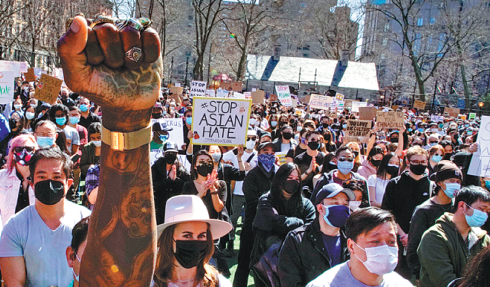
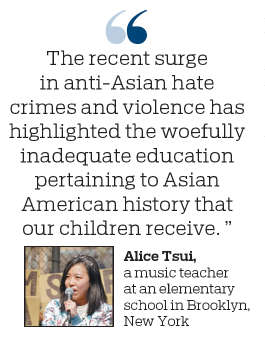
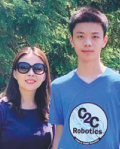






Today's Top News
- Xi extends greetings ahead of farmers' harvest festival
- Peace, development are what China really pursues
- UK, others recognize Palestinian statehood
- Xizang fireworks draw criticism, spur probe
- J-20 fighter can easily penetrate air-defense networks, designer says
- Xinjiang to build new expressway
















